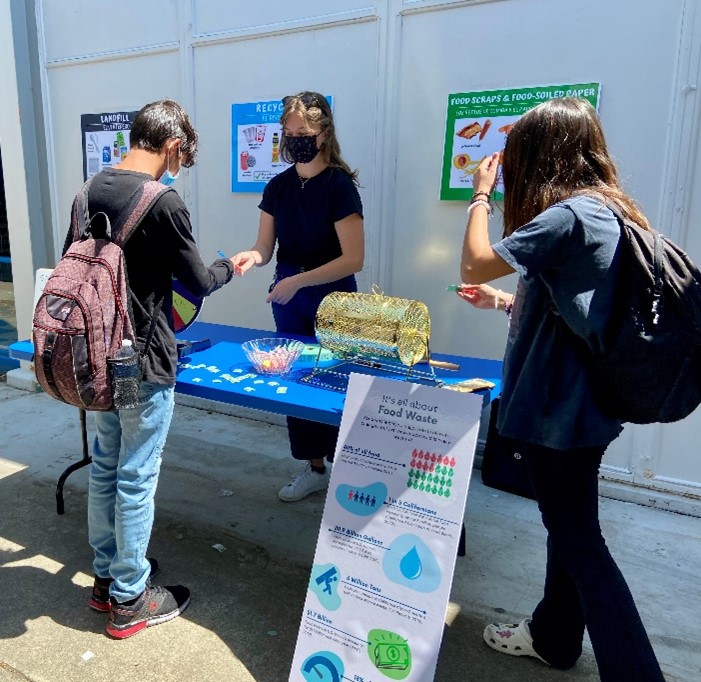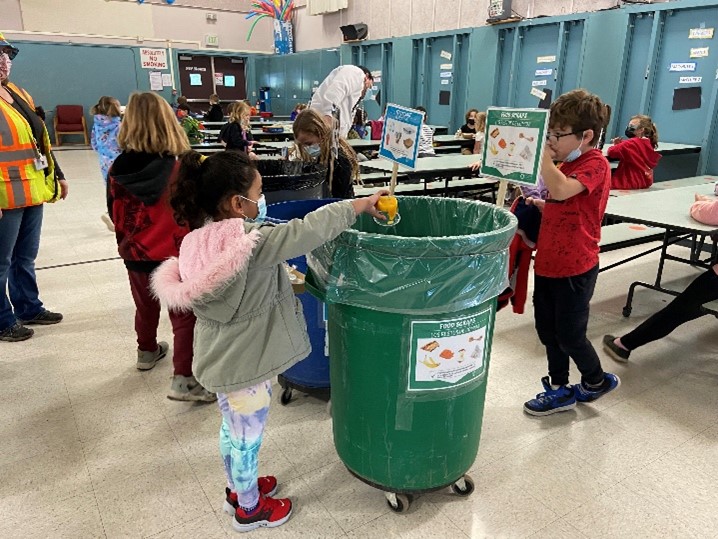
Fighting Food Waste
Did you know that in the United States, we waste about 108 billion pounds of food every year? That means that about 30-40 percent of the U.S. food supply ends up in the trash can where it is then sent to the landfill. While more food scraps are being collected for compost due to new California state mandates, food waste still accounts for the single largest material found in landfills, making up about 18% of municipal solid waste. Therefore, it may not be all that surprising to learn that food waste in landfills has a profound impact on our environment. But how does food waste have an environmental impact? And what is BREATHE doing to help address this issue?
Why is food waste a problem?
Landfills are designed to store our waste by burying it underground, creating compact environments. This means that there is not enough light or oxygen to help break down our organic material, so our leftover food can sit in landfills for decades. In fact, a single head of lettuce can take up to 25 years to decompose in a landfill, and as it slowly rots, it releases greenhouse gases like methane.
As a result, landfills are the third-largest source of methane in California. Methane is about 84 times stronger than carbon dioxide and a major contributor to climate change. That’s why Senate Bill 1383, California’s Short-lived Climate Pollutant Reduction Strategy, aims to fight climate change by requiring organic waste to be recycled in our schools, businesses, and residential areas. These greenhouse gases pollute the air we breathe, affecting lung development and causing asthma, emphysema, and other respiratory illnesses. Decreasing our greenhouse gas emissions is one way that we can mitigate global warming and improve our own health and quality of life. So, instead of throwing our food waste into the trash, where it gets sent to the landfill, we can actually recycle our leftover food into compost!
How is BREATHE helping schools fight the food waste issue?
As part of BREATHE’s Food Waste Recycling Program, we go to schools around the Sacramento region to educate students, staff, and administrators about the importance of reducing our food waste, the process of turning food scraps into compost, and how to sort our waste correctly so it can be recycled. I am constantly inspired by talking with these students and seeing how curious and motivated they are about making the world a better place. We have even had students tell us that after our presentation, they went home to tell their parents and started composting in their backyard! This school year we worked with Sacramento County and the City of Sacramento to implement food scraps recycling programs at 10 schools with students ranging from kindergarten to high school. In our School Food Scraps Recycling Toolkit, you can find resources and best practices to help schools start their own recycling programs. These resources include presentations for students, staff, and parents, flyers, interactive educational materials, and more!

Over the last month, we conducted a waste audit and determined that our programs diverted approximately 34.4 tons of food waste from landfills this school year. This equates to about 78 vehicles taken off the road! As more schools begin to recycle their food scraps, this could have a major impact on the amount of waste diverted away from landfills.
What can we do to help at home?
Schools aren’t the only place where we waste food. U.S. households waste about a third of their food, and most of this wasted food ends up in our landfills. There are many different ways you can prevent food waste in your home including meal planning and proper storage, but if you do create food waste, you can compost it.
As mandated by SB 1383, residential organics recycling programs are beginning to roll out across the City of Sacramento and Sacramento County. If you live in a multi-unit housing complex of five or more units, you most likely have already started separating your organic waste, which includes food scraps, food-soiled paper products, and yard waste. On July 1st, this program began rolling out to remaining residential properties which includes multi-unit housing of four or less units and single-family homes. This means you can help reduce harmful emissions by recycling your organic waste at home!
How are we supposed to divert our organic waste?
For those who live in multi-unit properties of five or more units, your property managers must provide a separate organics container to tenants in addition to a trash and recycling container. Starting July 1st, properties of four or less units and single-family properties will be notified to begin disposing of all organic waste into the organic waste container (currently your yard/green waste container).
Now, what can we actually recycle as organic waste?
- Any leftover cooked food (including moldy or rotting food)
- Fruits and vegetables (including peels, pits, and seeds)
- Bread and cereal
- Dairy and eggshells
- Meat (including bones)
- Coffee grounds and filters
- Tea bags
- Food soiled paper products: Napkins and paper towels, paper plates, greasy pizza boxes, paper lunch bags, etc.
- Yard/Green waste: Leaves, branches, grass, tree trimmings, etc.
To learn more about organics recycling where you live, check out these sites for Sacramento County and the City of Sacramento!